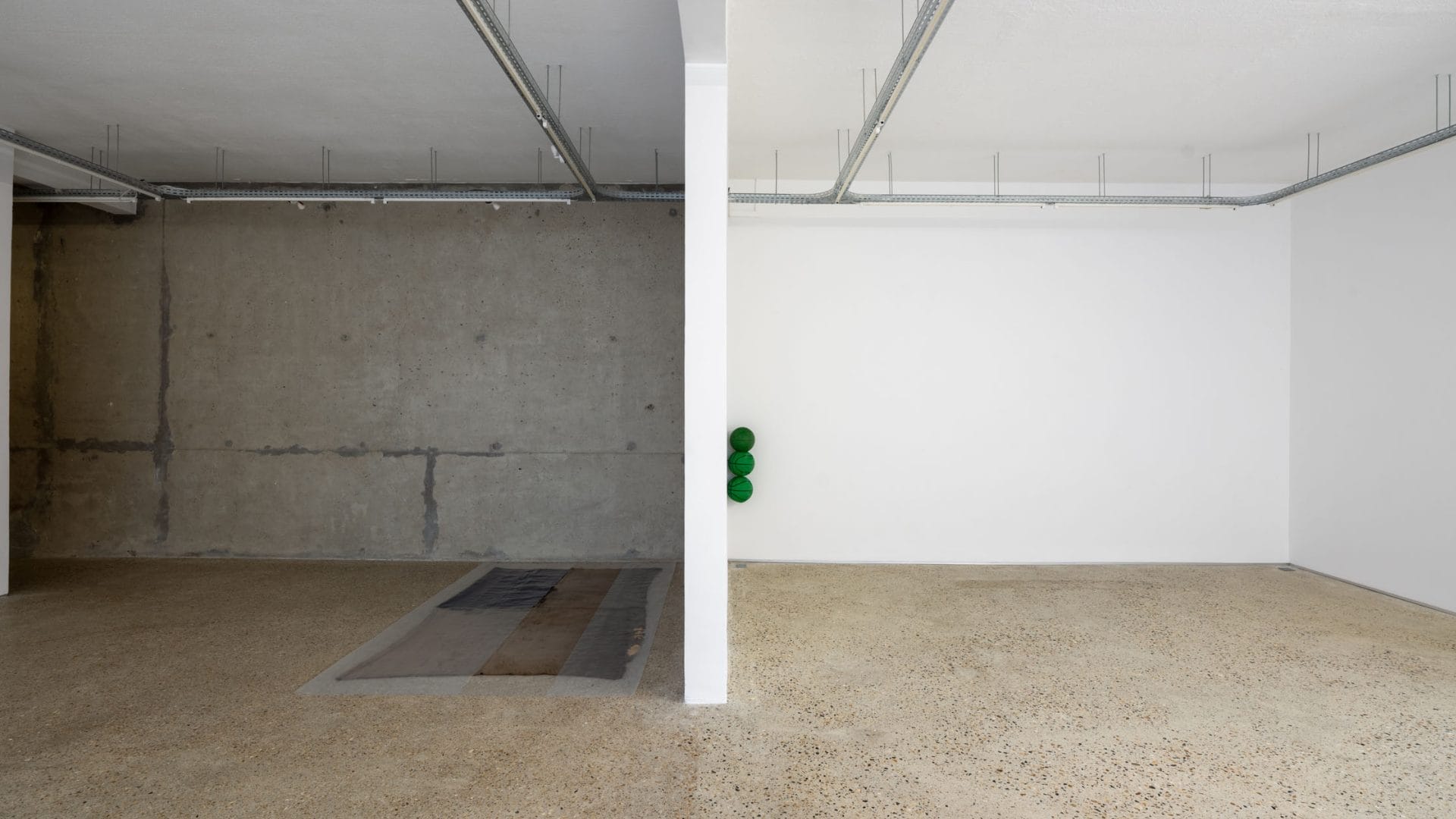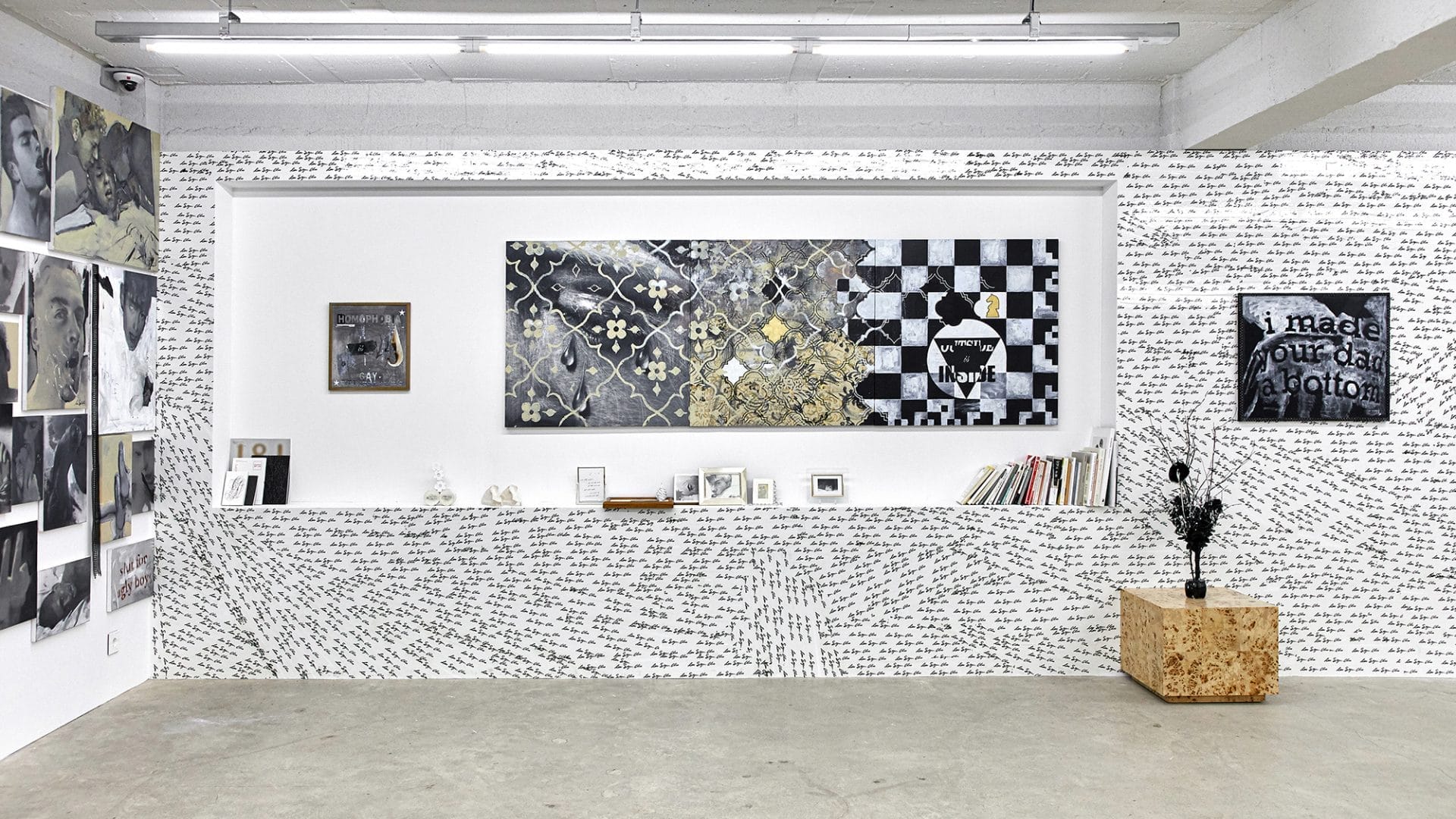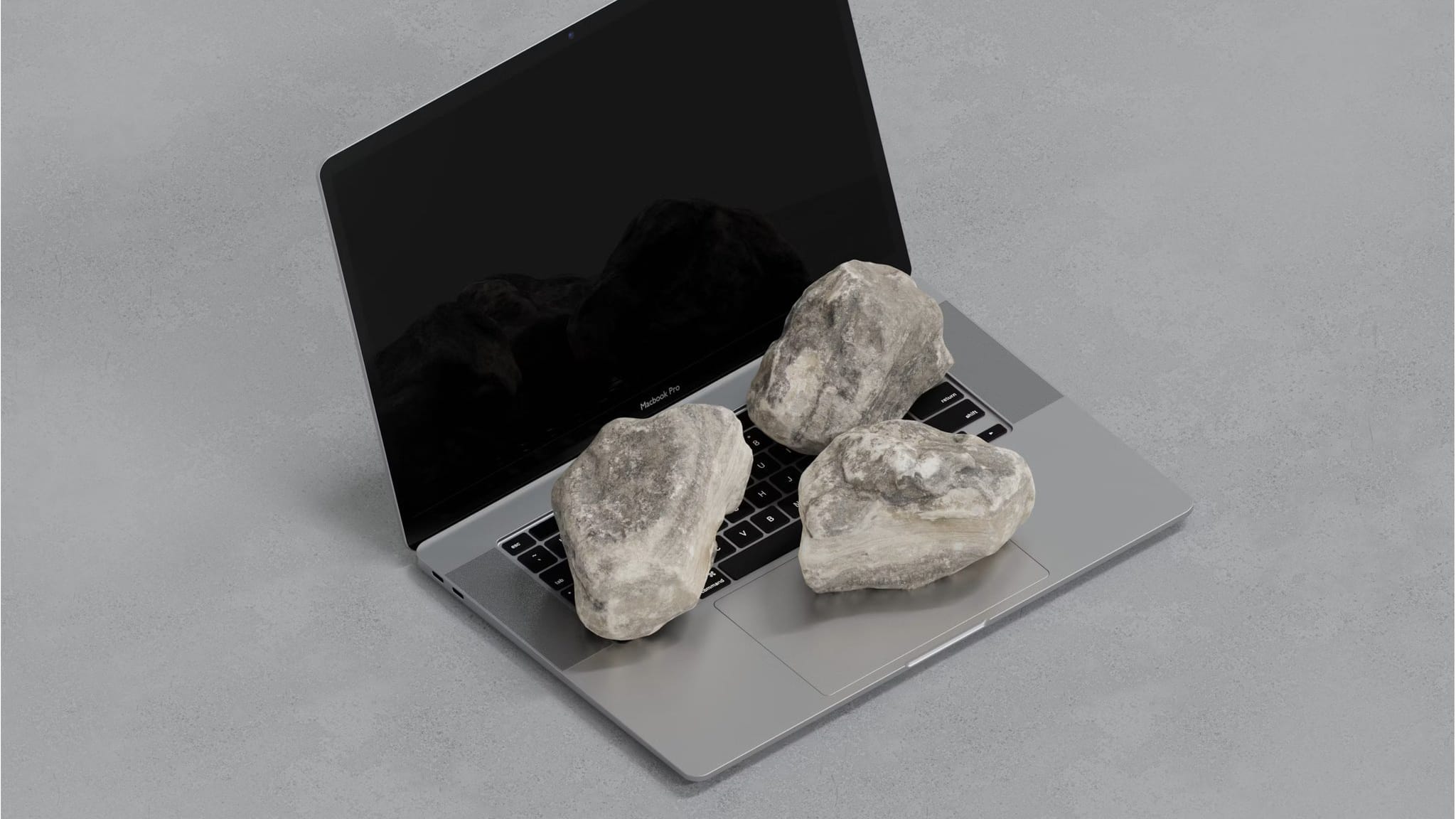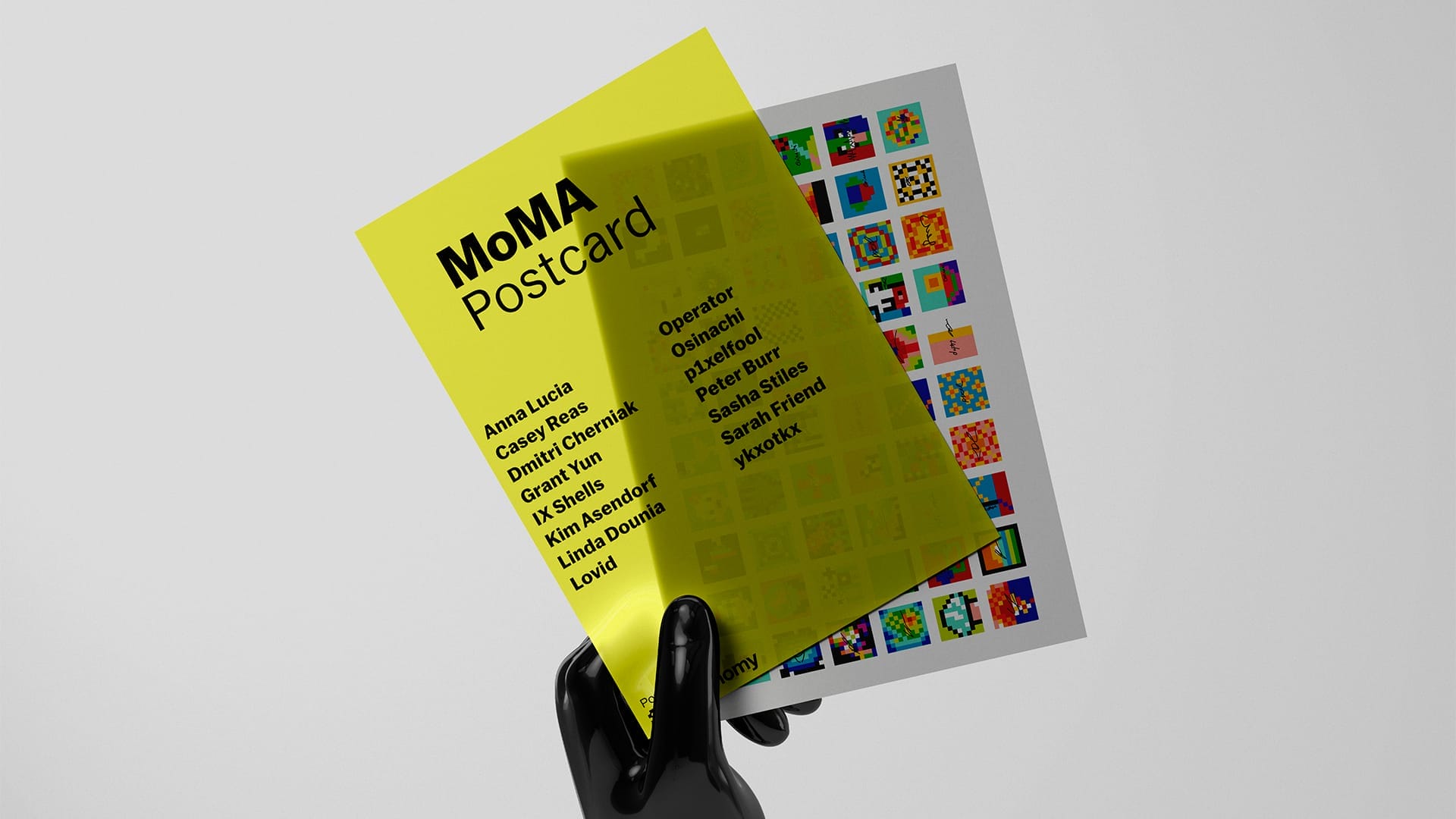
MoMA Postcard: Creative Dispatches on the Blockchain
Amidst a contemporary art scene increasingly bridging with the digital realm, the Museum of Modern Art (MoMA), in collaboration with Bitmark, recently debuted the MoMA Postcard project: a groundbreaking endeavor on the blockchain, extending an invitation to anyone keen on exploring, experimenting, and co-creating within the web3 technological landscape. Each postcard, reminiscent of a digital chain letter, unfolds collaboratively—stamp by stamp, person by person—as it travels from one creator to the next.
In the digital landscape, art and technology meld to create a new lexicon of creative expression. With this fusion, creation has evolved from a solitary act into a collective journey encompassing diverse narratives and shared goals. And at the heart of this transition lies blockchain technology, fostering a newfound ethos of shared ownership, authenticity, and community-centric creativity.
MoMA Postcard emerges as a poignant embodiment of this narrative, encapsulating the essence of global creative collaboration in this digital age.
And it transcends a mere digital art project; it epitomizes the intrinsic human endeavor to connect, share, and co-create. Each digital postcard is a initially a blank canvas traversing the digital expanse, amassing unique creative expressions from artists worldwide.
As artists imprint their individual stamps on a postcard, they’re not merely contributing digital art; they’re adding chapters to a shared narrative, affirming the diversity and boundlessness of the global digital art community.

Igniting Global Creativity: The Inception of ‘MoMA Postcard First 15’
At the nucleus of MoMA Postcard lies the principle of community—a harmonious convergence of individual creative expressions, orchestrated on the blockchain’s decentralized ledger.
Blockchain technology functions as the backbone of this collective narrative, not merely validating and recording each creative contribution, but binding this digital artist community together.
On October 3rd, the Museum of Modern Art (MoMA) unveiled the MoMA Postcard project, introducing a remarkable initiative known as the ‘MoMA Postcard First 15.’ This initiative signified the beginning of a broader endeavor to cultivate a global community of creative minds.
The ‘MoMA Postcard First 15’ brought together a diverse assembly of 15 avant-garde artists from across 35 cities, spanning 11 countries and 5 continents, namely Anna Lucia, Casey Reas, Dmitri Cherniak, Grant Yun, IX Shells, Kim Asendorf, Linda Dounia, LoVid, Operator, Osinachi, p1xelfool, Peter Burr, Sarah Friend, Sasha Stiles, and ykxotkx.
The initiative kicked off with each artist devising a unique creative prompt for their respective postcard. These prompts served as thematic guides, offering a narrative foundation while allowing ample space for both individual and collective artistic expressions as the postcard journeyed from one artist to the next.
As every artist contributed a distinct stamp to the postcard, their creative input was validated and immortalized on the blockchain.
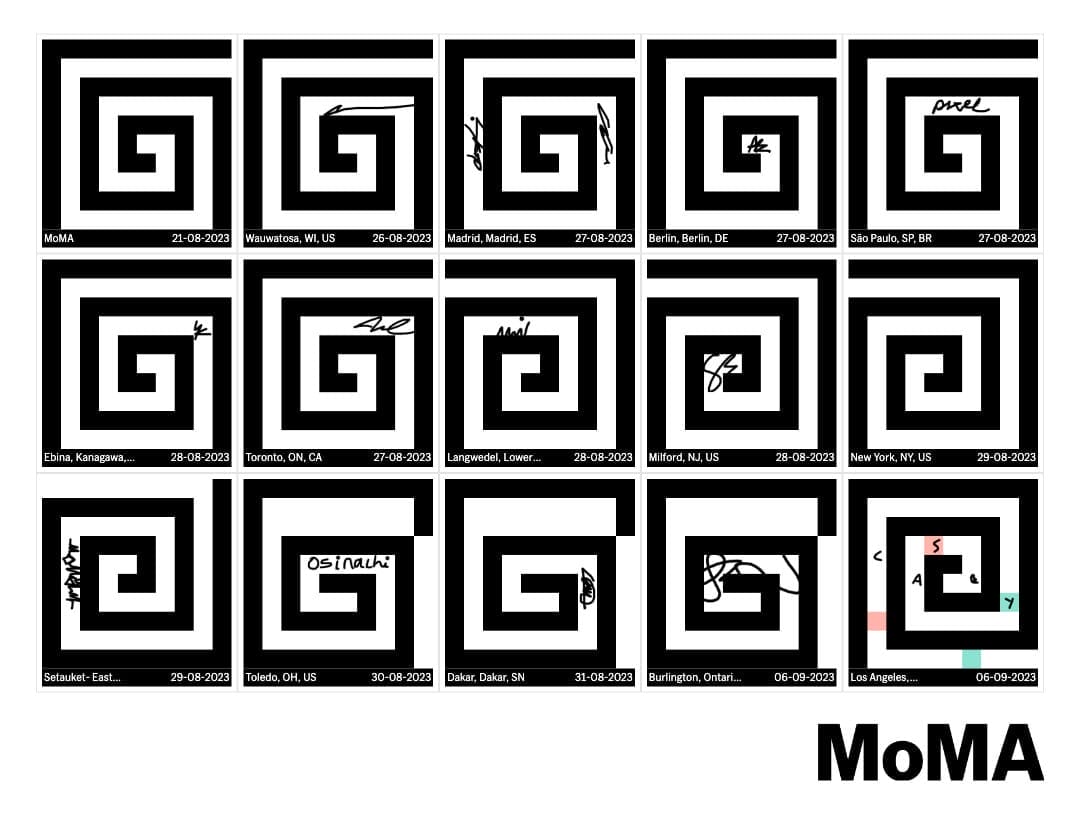
Blockchain: The Underpinning of Community and Creativity in MoMA Postcard
At the heart of MoMA Postcard, a narrative of community, creativity, and collaboration pulsates, all bound together by the threads of blockchain technology.
Much like a postcard crossing borders, conveying messages from one individual to another, blockchain facilitates a journey of collective creativity, unhindered by geographical boundaries or traditional constraints.
At its core, blockchain technology embodies the principles of shared ownership and authenticity, serving as the vital threads weaving the fabric of MoMA Postcard. Each digital stamp on a postcard is akin to a block on the blockchain—a unique, indelible imprint contributing to a larger narrative. As artists imprint their creative stamps on a postcard, they are, in essence, adding blocks to a decentralized, global canvas of collective creativity. Each block, each stamp, holds a story, a creative expression enriching a shared digital narrative.
The decentralized nature of blockchain underpins the MoMA Postcard project, crafting a realm where artists across the globe can contribute to a shared artistic narrative. This decentralization democratizes digital artistry, enabling a collaborative environment where every artist, regardless of geographical location or background, can contribute to the global artistic dialogue.
The attributes of shared ownership and authenticity extend beyond mere technical features; they form the ethos of MoMA Postcard. They ensure every creative expression is authenticated, every artist’s contribution is recognized and owned collectively by the community.
Moreover, blockchain’s promise of authenticity forges a significant bridge between the virtual world of digital artistry and the real world of artistic appreciation. Throughout this project, this bridge is further strengthened by the Autonomy Wallet, which facilitates the seamless interaction between the digital and physical, ensuring a tangible link that connects artists, beholders, and the broader digital art community, nurturing a domain of authentic, community-centric creativity.
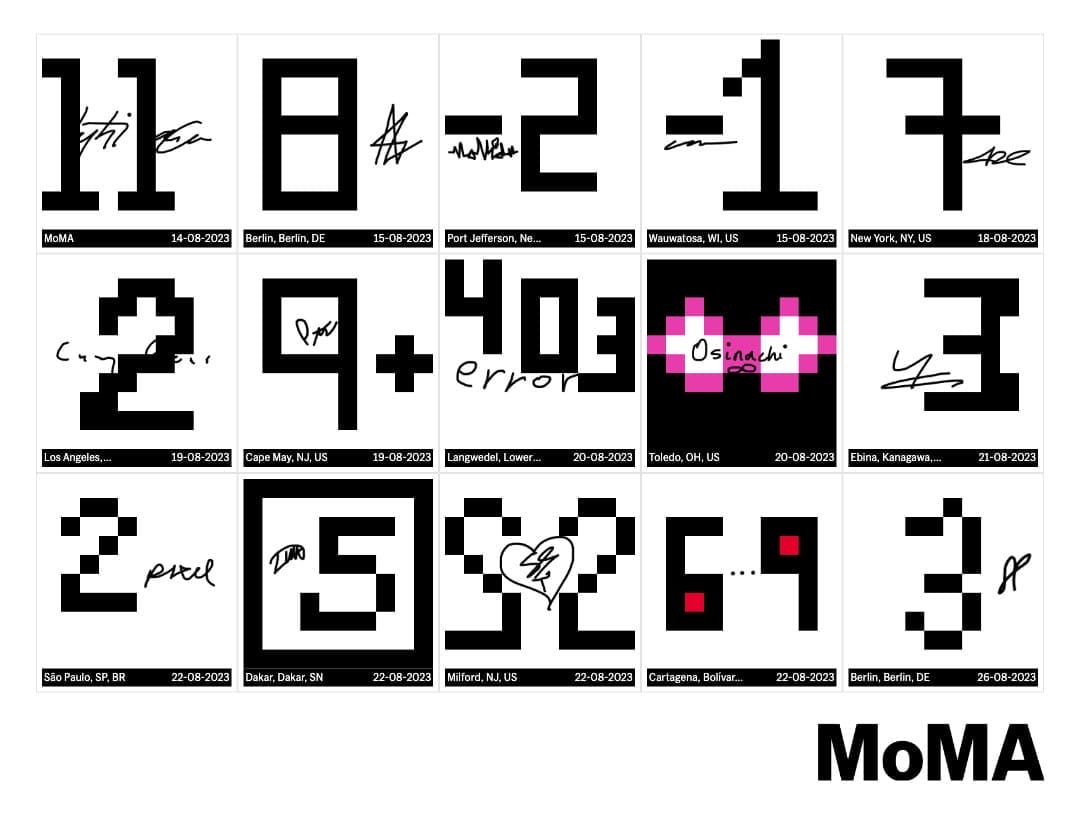
Autonomy Wallet: Bridging Digital and Physical Realms in MoMA Postcard
Blockchain’s promise in bridging the digital and physical realms of artistry finds a practical manifestation in the functionalities of the Autonomy Wallet by Bitmark. Serving as a vital link in the chain of collaborative creativity, Autonomy Wallet provided a platform that elevated the experience of creators in the MoMA Postcard project. Its interactive interface and real-time progress tracking feature were instrumental in knitting together a global community of artists, transcending geographical and technological barriers.
The MoMA Postcard project, enabled by blockchain and facilitated through Autonomy Wallet, showcases a remarkable marriage of art and technology, while redefining community engagement in the digital space.
The following exchange with Elisabeth Sweet, Communications Lead at Bitmark, delves deeper into the role and contributions of Autonomy Wallet in this transformative project.
How did Autonomy Wallet’s interactive platform specifically enhance the collaborative experience for creators in the MoMA Postcard project?
Autonomy allows users to connect their wallet and see their NFTs directly in the app. The app automatically opens up a new Ethereum and Tezos wallet and stores the seed phrase on the user’s keychain. For those who are new to web3, this is an easy onboarding tool which gives them access to the world of NFTs and blockchain, while MoMA Postcard gives them a fun and creative reason to participate in blockchain for the first time. Those with blockchain experience can add their wallets to the app and view their NFTs.
* For this iteration of MoMA Postcard, we used the Tezos blockchain. If you already have a Tezos wallet, you can add your wallet to the app before you stamp a Postcard. The stamp will then be minted through your Tezos wallet instead of the new wallet created for each app user.
MoMA Postcard facilities autonomous decision-making about stamp design while collectively building aesthetic value. This experiment in borderless co-creation integrates values of web3 such as creativity and independence while giving those outside the current community an opportunity to participate in the conversation around blockchain and art.
Can you elaborate on the real-time progress tracking feature provided by Autonomy Wallet, and how it fostered a sense of global community among artists?
Part of the fun of a traditional postcard is seeing where it originated and how far it traveled to your mailbox. We have expanded on this by tracking the distance traveled by each stamp. For example, Postcards by the First 15 traveled upwards of 49,000 miles.
After designing a stamp, stampers can opt in for their current city to be recorded by the app. This allows for the distance between them, the previous stamper, and the next stamper to contribute to the total distance traveled by the Postcard. If someone chooses for their city not to be recorded, their distance is noted as 0 km/mi.
By watching how far a postcard travels, we begin to see how decentralized yet connected our global networks of friends, colleagues, and families are becoming today.
Digital Chain Letter Mechanism: How did the digital chain letter mechanism of passing the postcard from one creator to another function within the Autonomy Wallet, and what was the inspiration behind this approach?
The digital chain letter is a cultural reference to the earlier internet days, where people sent an email to one or several friends who then passed it along. It serves as another access point for people who might not yet be educated in blockchain to engage with the project. Now, we can see these links and networks with the help of blockchain tools and while protecting the degree of anonymity which a user wants to maintain.
Stampers communicate with each other through aesthetics and chat: each Postcard has an encrypted chat function for the 15 people who stamp it.
MoMA Postcard integrates the memetic value of a Postcard, emphasizing the traditions of internet culture, with blockchain tools to create literal chains of connection across the world.
How does Autonomy Wallet emphasize the community aspect over the financial aspect often associated with NFTs, in the context of the MoMA Postcard project?
The aesthetic value of the Postcard grows as the number of owners increases. Each person who accepts the invitation to stamp the Postcard receives an equal property rights to it, which allows them to stamp, send, and download their stamp. (Now, stampers may also download the Postcard!)
Financial decisions about the entire Postcard are decided by the group, while individuals are given the right to do what they wish with their token. Blockchain renders these decisions transparent, thus seeding trust within the group. In this sense, MoMA Postcard explores social and financial behaviors with digital goods.
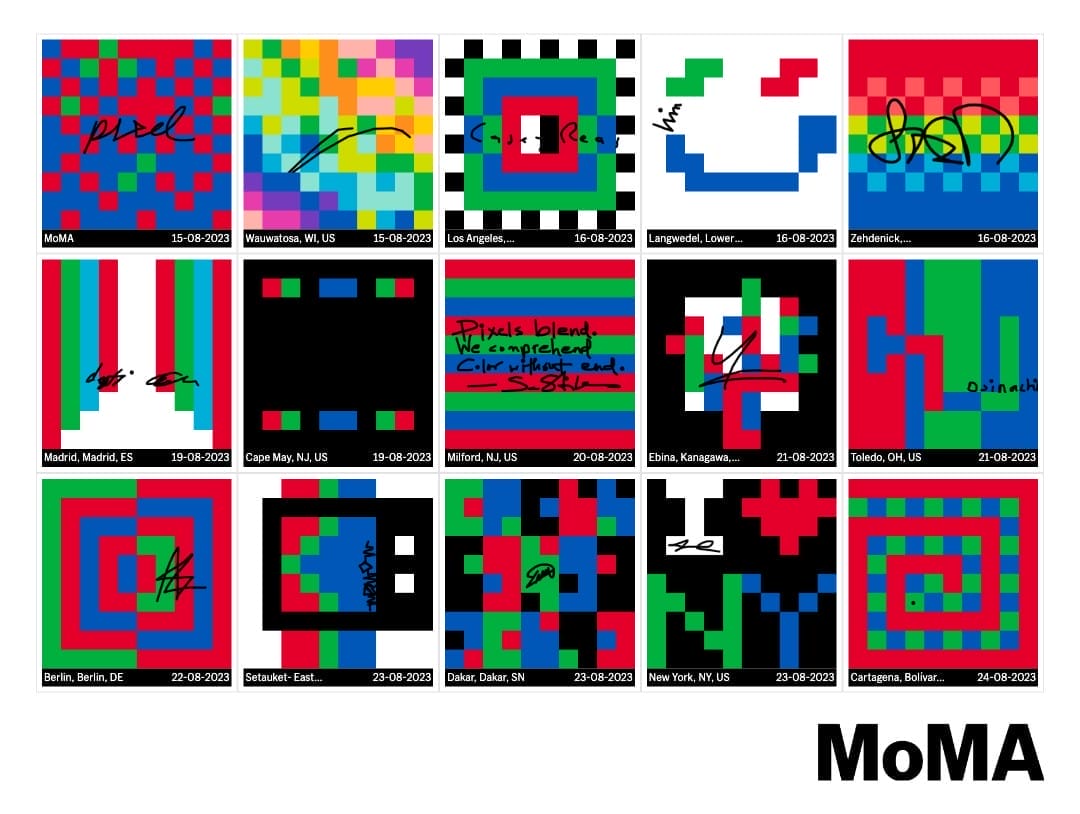
The Enduring Legacy of MoMA Postcard: What is Yet to Unfold
‘MoMA Postcard First 15’ initiative sets a monumental precedent by highlighting the boundless potential of collective creativity enabled by blockchain technology.
By adopting blockchain technology, often met with skepticism in traditional art circles, MoMA is not merely facilitating global artistic collaboration but is also articulating a powerful assertion about the authentic and immutable nature of digital art.
The participation of such a distinguished institution in this blockchain-driven project delivers a compelling message to the global art community. It challenges established notions, encourages a reevaluation of what constitutes art in the digital era, and propels the narrative of digital art towards broader acceptance and recognition.
MoMA Postcard is a narrative that reflects the evolving ethos of art, signaling a transition from the traditional to the digital, from the solitary to the collective, and from the centralized to the decentralized. It testifies to the transformative power of melding traditional art with modern technology to establish a global platform where creative possibilities are redefined.
With MoMA Postcard, the Museum of Modern Art embodies a forward-thinking approach, melding the past with the present, and in doing so, invites a global community of digital artists to partake in a shared narrative of creativity.
An invitation that transcends the digital landscape, reaching into the core of the enduring dialogue about the essence of art, community, and shared creative expression. MoMA Postcard emerges as a symbolic venture, a testament to the inexhaustible possibilities that reside at the crossroads of art, technology, and global collaboration, inscribing a significant chapter in the unfolding narrative of digital art and digital culture.
To get involved in the MoMa Postcard project, visit: https://www.moma.org/calendar/exhibitions/5618

fakewhale
Founded in 2021, Fakewhale advocates the digital art market's evolution. Viewing NFT technology as a container for art, and leveraging the expansive scope of digital culture, Fakewhale strives to shape a new ecosystem in which art and technology become the starting point, rather than the final destination.
You may also like
Michael E. Smith at Crèvecœur: The Ghost of Objects
We don’t know who first said, “Objects don’t die; they transform.” It almost sounds like a p
Leesop Cho, Voici Voice at Caption Seoul, Seoul
Voici Voice by Leesop Cho, at Caption Seoul, Seoul, 19/04/2025–16/05/2025. Exhibition text:Leesop
Sculpting Silence: Luca’s “Reflections” on Ecology and Self
Introducing Luca Artist: Luca – Living in: Turin, Italy Visit Artist Website In this article,

